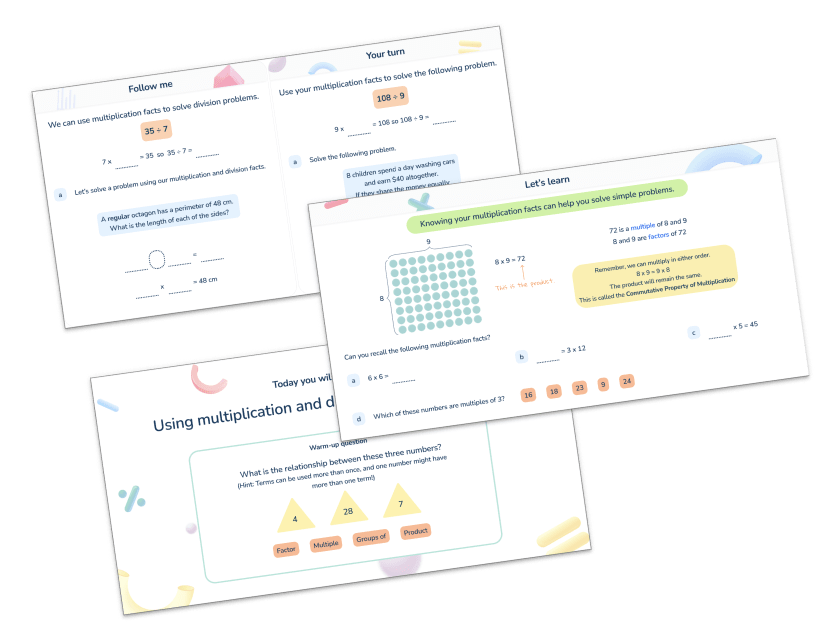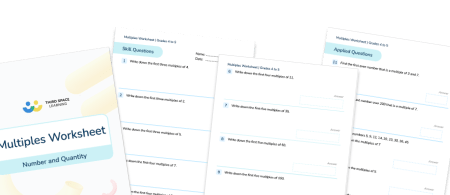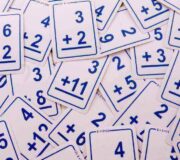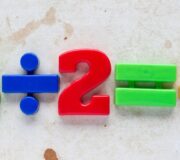What Is A Multiple: Explained For Teachers, Parents and Kids
Make learning what is a multiple, simple for elementary children. Here is a step by step guide to support teaching multiples in elementary school. A secure knowledge of multiplication facts is essential in calculating multiples.
What is a multiple?
A multiple of a number is the result when that number is multiplied by an integer. Examples of a multiple of 14 could be 14 (14 x 1), 28 (14 x 2) or 140 (14 x 10).
The definition of multiple can also be described as numbers in a given multiplication table – for example, 5, 10, 15 and 20 are all multiplications of 5; they are also all multiples of 5. Even numbers are all multiples of 2. There is a multiple of every number.
Children often confuse multiples with factors. Read more about factors of a number and the greatest common factor (also known as the highest common factor).
Multiples Worksheet
Printable worksheet for 4th grade students with 10 skills based practice questions and 5 applied questions.
Download Free Now!
When do children learn about multiples in the common core?
Children are expected to know the first 12 multiples of the numbers 1-12 by the end of 4th grade. This is gradually taught throughout elementary school.
Kindergarten:
- Count in multiples (also known as ‘skip counting’) of ones and tens, within 100.
1st grade:
- Count in multiples of 2’s, 10’s and 100’s, within 120.
- Add on and subtract in multiples of 10, within 100.
2nd grade:
- Count in multiples (skip-count) by 5’s, 10’s and 100’s, within 1,000.
3rd grade:
- Count in multiples of 6, 7, 9, 25 and 1000
- Multiply one-digit whole numbers by multiples of 10 (i.e. 9 x 50, 6 x 30)
4th grade:
- Find factor pairs for a whole numbers in the range 1-100
- Solve problems involving multiplication and division including using their knowledge of factors and multiples
- Use factors and multiples to recognize equivalent fractions and simplify where appropriate
Alongside the regular multiplication facts, multiples of 25, 50, 100 and 1000 are also taught, as these are useful when working with fractions and decimals, as well as units of measurement.
5th grade:
- Identify common factors, common multiples and prime numbers
- Use common multiples to express fractions in the same denomination
- Solve problems involving unequal sharing and grouping using knowledge of fractions and multiples

Meet Skye, the voice-based AI tutor making math success possible for every student.
Built by teachers and math experts, Skye uses the same pedagogy, curriculum and lesson structure as our traditional tutoring.
But, with more flexibility and a low cost, schools can scale online math tutoring to support every student who needs it.
Find out more
What is the lowest common multiple?
The lowest common multiple (LCM), also referred to as the least common multiple, is the smallest multiple shared between two given numbers.
For example, the lowest common multiple of 9 and 12 is 36 as it is the smallest multiple that both given numbers share (9 x 4 = 36 and 12 x 3 = 36). Lowest common multiples can be used to express fractions in the same denomination, which is useful when they are being added or subtracted.
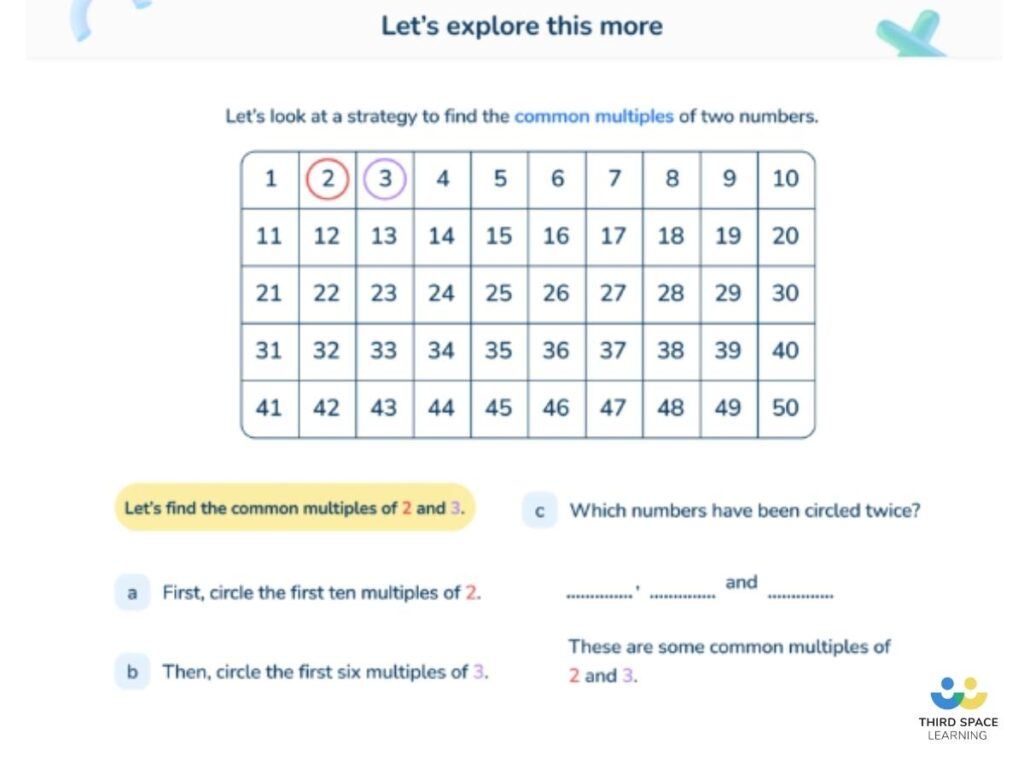
How do multiples relate to other areas of math?
Multiples and factors are often taught together: while factors are the result when you divide a number by an integer (with no remainder), multiples are the result when you multiply a number by an integer.
In 4th grade geometry, children are taught multiples of 90 degrees (90 = quarter turn; 180 = half a turn, or a straight line; 270 = three-quarter turn; 360 = full turn, or a circle). As previously mentioned, finding common multiples is also useful when expressing fractions in the same denomination.
Multiples of numbers in real life
Multiples are useful when organizing a number into groups – for example, 25 is a multiple of 5: 25 children could be organized into groups of 5; 25 cents could be paid in 5 nickels.
Common multiples are also useful in real life contexts – for example, if burgers come in packs of 8 but burger buns come in packs of 6, finding a common multiple (24) would help you work out how many of each pack to buy (3 and 4 respectively) without wasting any.
5 multiple practice questions and answers
- 1. What’s the lowest common multiple of 8 and 12?
- 2. Chen uses these digit cards: 5 6 9. She makes a two-digit number and a one-digit number. She multiplies them together. Her answer is a multiple of 10. What could Chen’s multiplication be?
- 3. Write all the common multiples of 3 and 8 that are less than 50.
- 4. In the circles, write a multiple that belongs to each set. One has been done for you.
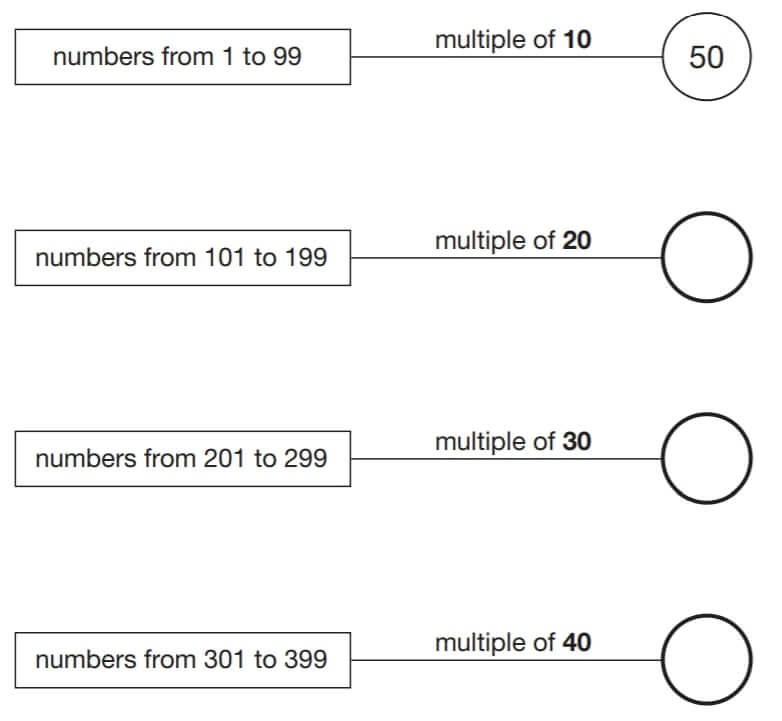
- 5. Here is a diagram for sorting numbers. Write one number in each box. One is done for you.
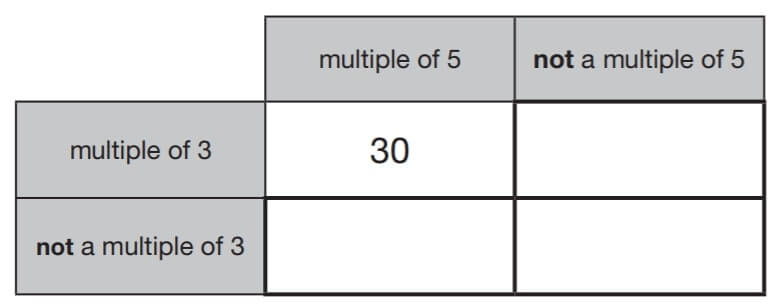
Answers:
- 24
- 96 x 5
- 24, 48
- a) 120, 140, 160 or 180
b) 210, 240 or 270
c) 320 or 360 - Top right: 3, 6, 9, 12, 18 etc.
Bottom left: 5, 10, 20, 25, 35 etc.
Bottom right: 1, 2, 4, 7, 8 etc.
Some of the multiples of 12 are 12, 24, 36, 48, 60, 72, 84, 96, 108, 120, 132, 144, but there are many many more. The multiples of 12 are achieved by multiplying any other number by 12.
A multiple is the product of two numbers. A factor is a number that fits exactly into a given number, or divides a particular number with no remainder. A factor is always a positive integer (whole number).
A multiple of any given number can be achieved by multiplying that number by any integer (whole number)
Looking for more advice on how to explain other mathematical concepts to your students? Take a look at our Math Dictionary for Kids
Further Reading:
Do you have students who need extra support in math?
Skye—our AI math tutor built by experienced teachers—provides students with personalized one-on-one, spoken instruction that helps them master concepts, close skill gaps, and gain confidence.
Since 2013, we’ve delivered over 2 million hours of math lessons to more than 170,000 students, guiding them toward higher math achievement.
Discover how our AI math tutoring can boost student success, or see how our math programs can support your school’s goals:
– 3rd grade tutoring
– 4th grade tutoring
– 5th grade tutoring
– 6th grade tutoring
– 7th grade tutoring
– 8th grade tutoring
The content in this article was originally written by primary school teacher Sophie Bartlett and has since been revised and adapted for US schools by elementary math teacher Christi Kulesza.
